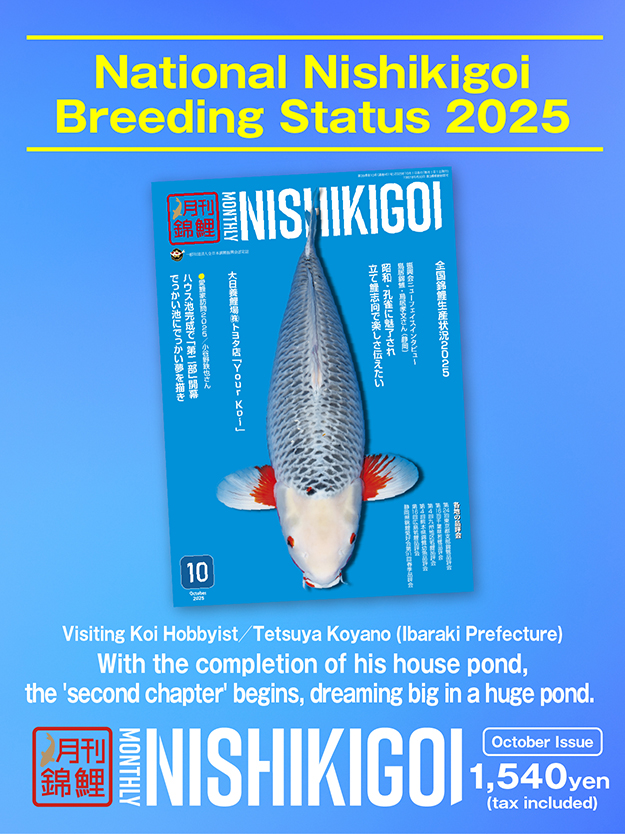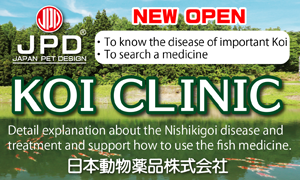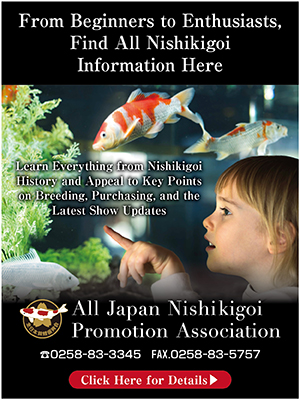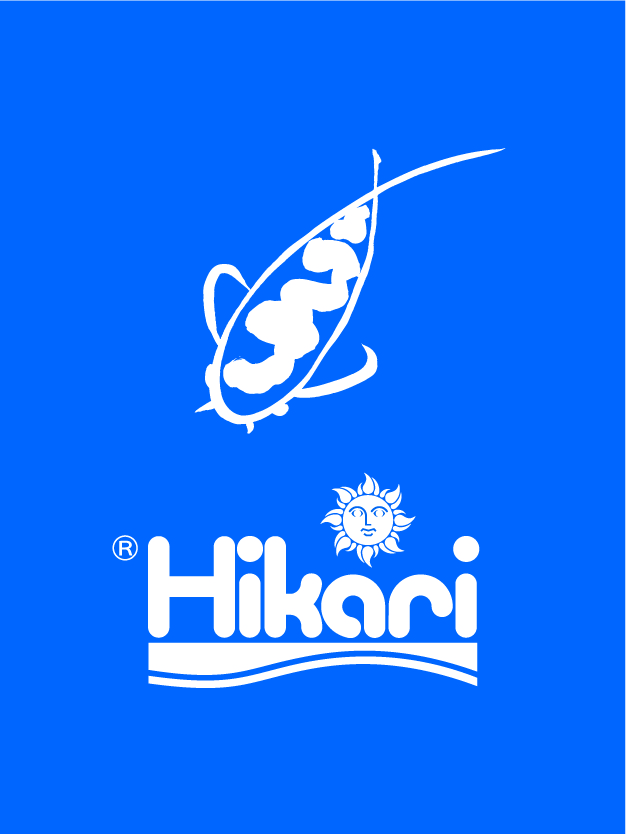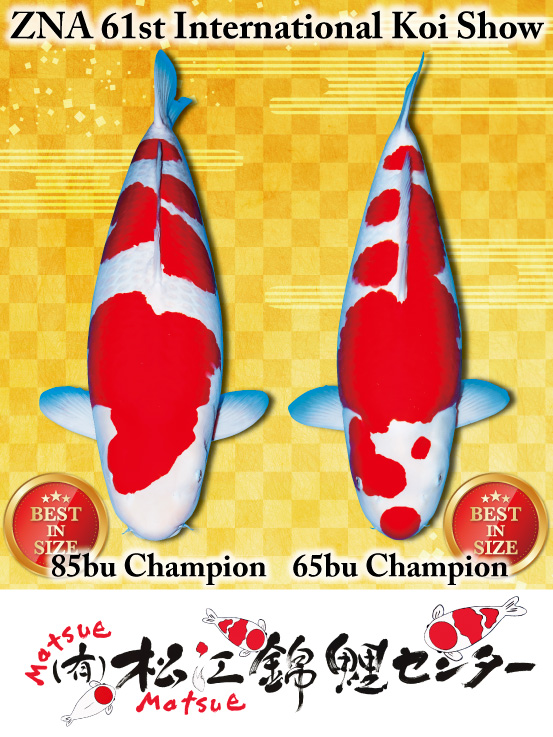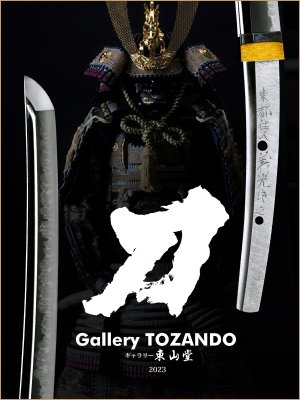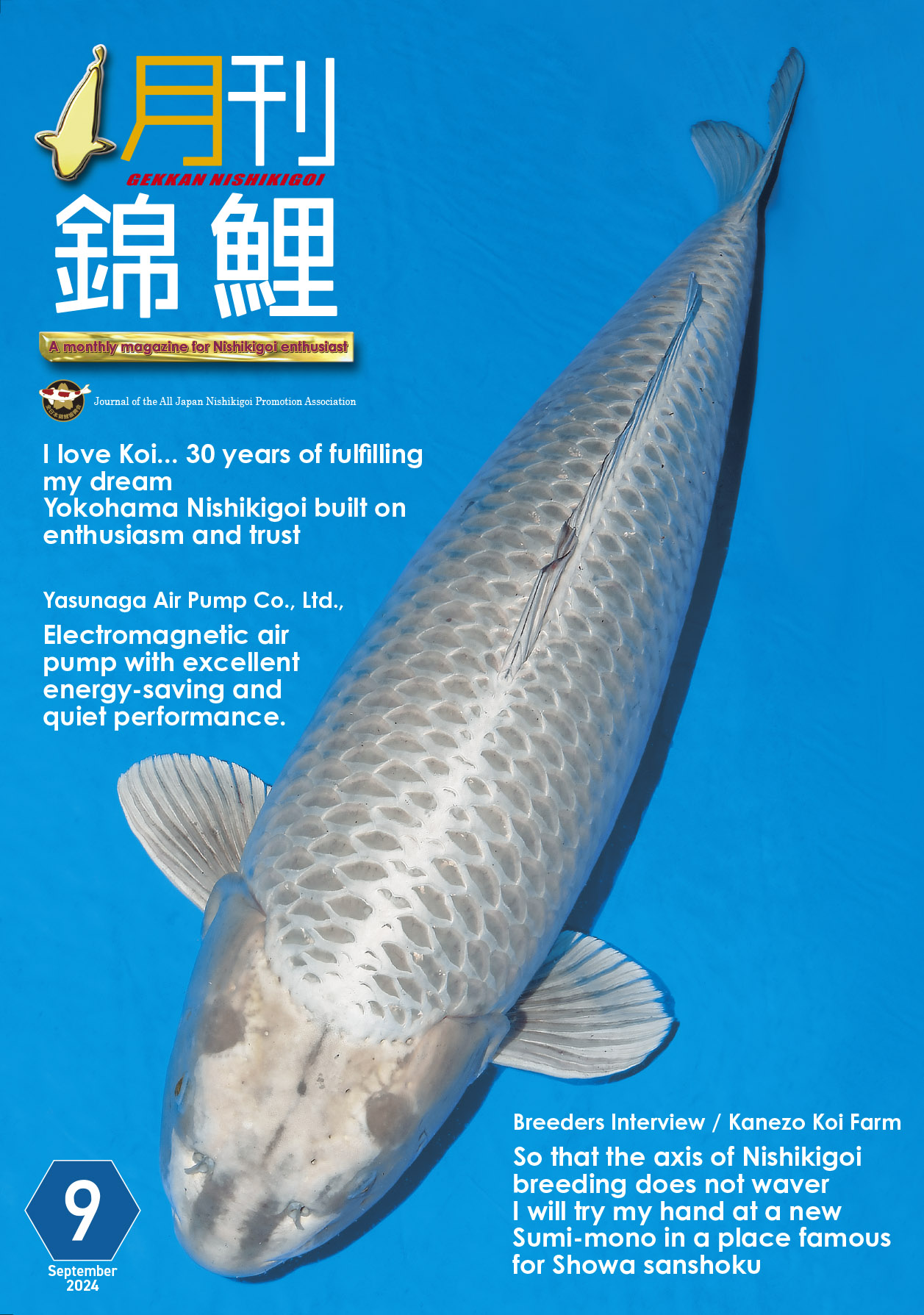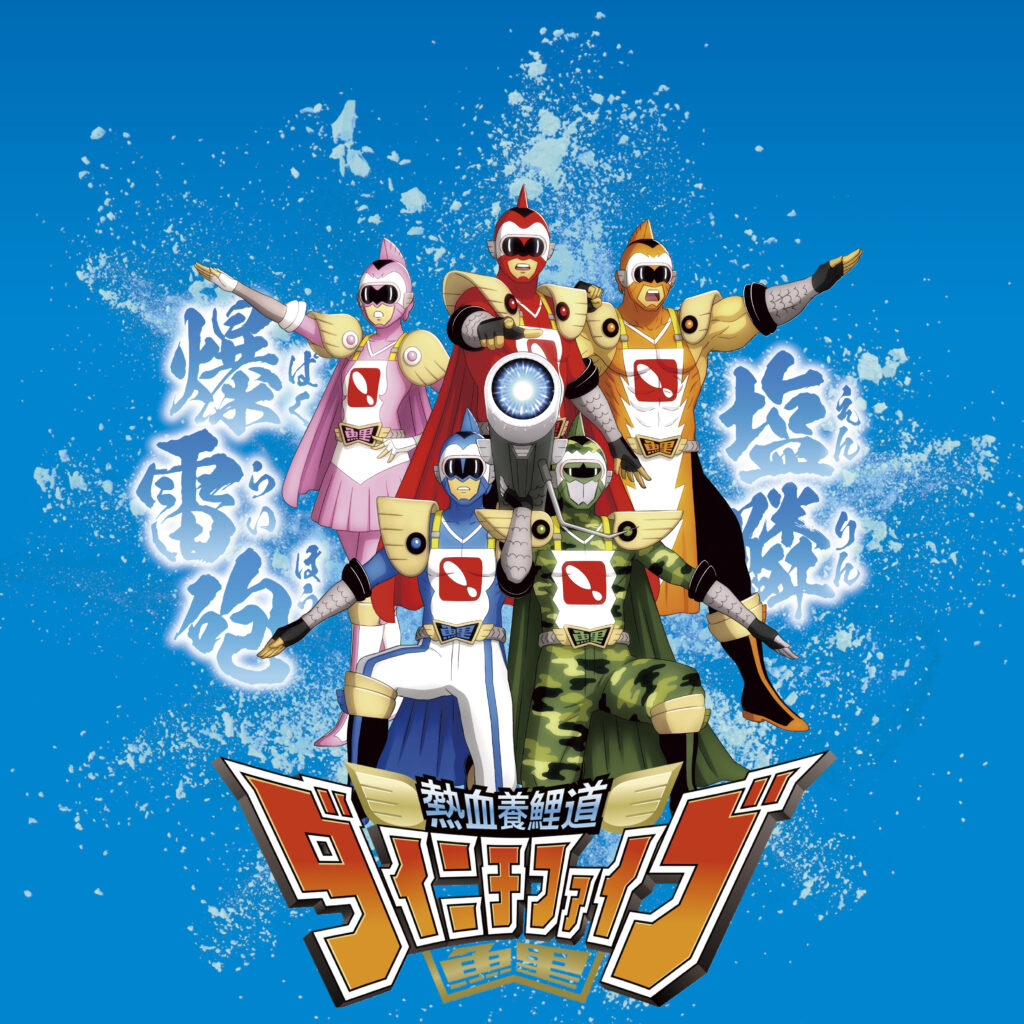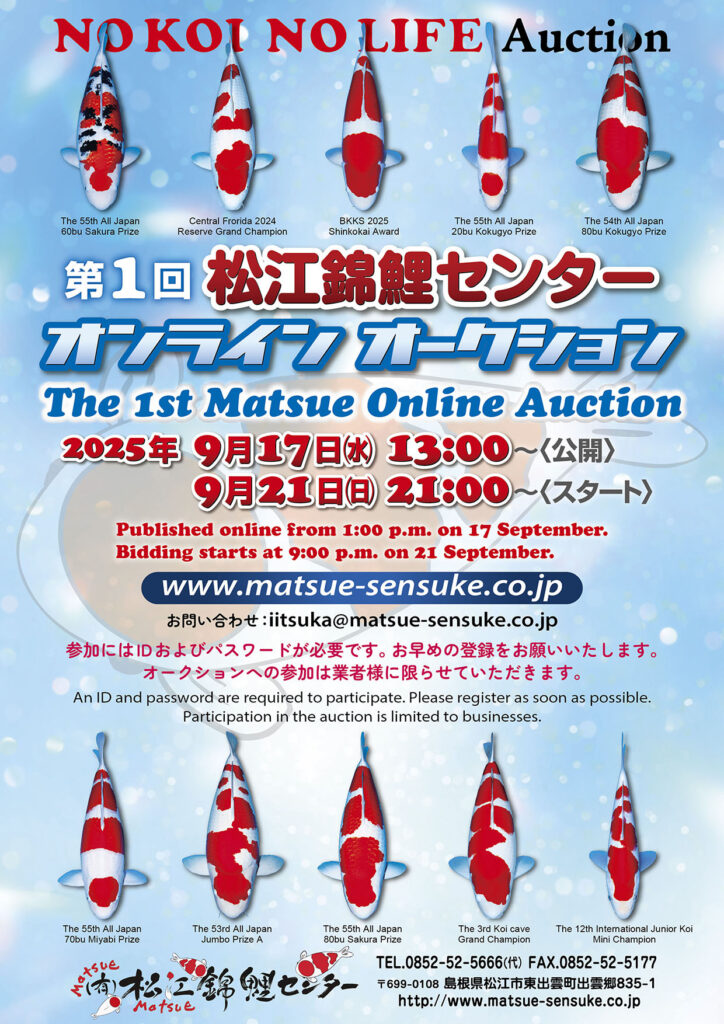ー Can you introduce tosai pond?
Tamaura: Since we started raising koi in spring water last year, we’ve reduced the number of ponds to six this year. If the koi can be raised in spring water, that’s ideal, but there are many aspects we won’t fully understand unless we continue doing it for several years, and there are also challenges in getting things to go as planned.
ー I heard that you don’t sell many tosai. Do you mainly sell two-year-olds?
Tamaura: Yes, that’s right. We basically don’t sell tosai, so our main products are two and three-year-olds.
ー Is that because you want to see how they grow?
Tamaura: Well, that’s part of it. Also, we intend to keep all the koi until they are fully grown, not just for sale. Of course, there are some that don’t grow as expected, but that’s our intention.
ー I’ve heard that recently, the sales of medium-sized koi have been poor. Is that also a factor?
Tamaura: That’s part of it, but also, our pond has limited capacity, so we can’t afford to keep too many extra koi.
ー For the tosai to be released into the wild pond by early spring, they need to reach a certain size, right?
Tamaura: The ones we collected on July 23rd are still small, but we’ll work hard to grow them by spring. Occasionally, some koi don’t make it to that size in time, so we keep them in the pond for another year. This year, there weren’t too many like that.
ー Since it’s the last batch, there isn’t much time left for growth, right?
Tamaura: That’s why we have to do the first selection quickly. We need to broadly pick out “promising koi” and then do the second selection within about 10 days to two weeks. We have to reduce the numbers this way because otherwise, we can’t fatten them up in such a short time.
ー I see.
Tamaura: This year’s young koi have already been moved into the house pond. They’re still small in size, though.
ー Is that from the first batch?
Tamaura: From the first and second batches.
Kuninori: And the early part of the third batch as well.
ー If you move them in by early September, wouldn’t the outdoor ponds end up empty?
Tamaura: That’s actually fine (laughs). It’s not just about making them bigger. If they grow too quickly, their patterns can disappear (laughs).
Kuninori: So even at this time, the house pond is full of young koi.
ー I thought that by September, most breeders’ young koi ponds would be full, but that’s not the case?
Tamaura: Some people haven’t moved theirs at all. The ones raised outside do get bigger, but just making them big isn’t everything. If the selection is delayed, the red can fade, and you might end up with mostly non-desirable ones (laughs).
ー Has that kind of thing happened before?
Tamaura: Oh, definitely. It happens all the time.
Kuninori: So even if the schedule is set, if the president says, “We need to start selecting soon, or we’ll be in trouble,” we’ll change it and move things up.
ー Is it more likely to become a problem between the second and third selecting stages?
Tamaura: In our case, yes. Other places might have issues between the first and second stages, but for us, even during the second selecting, the first stage is still quite small, just a bit bigger.
ー By moving them into the house earlier and raising them carefully, you can reduce those risks while still managing the cultivation, right?
Tamaura: They don’t grow as fast as they would outside, though. Even with sleeping sickness, if you don’t intentionally expose them to it in the house, they won’t catch it.
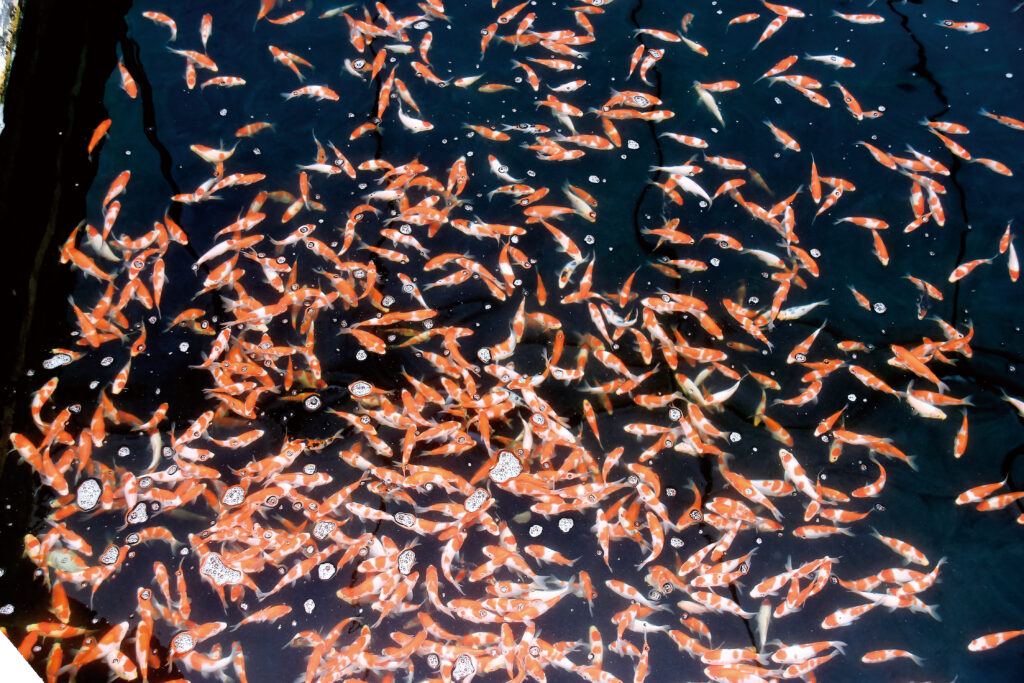
ー Isn’t sleeping sickness something that occurs naturally?
Tamaura: Normally, if you move them from a mud pond to a new pond, they should catch it, but in our case, they don’t get it at all. So, we expose them all to it at once when we move them. This year, we did that around October 10th.
Hidemi: In our case, Kuninori manages the schedule, and everything is planned far in advance.
Tamaura: A meticulous schedule, huh? (laughs)
ー How do you administer medication to the koi all at once?
Tamaura: We first preserve the nakabane from the previous year and then use them to make a sleeping sickness medication, which we spray in large quantities all at once.
ー After administering the medication, do the koi get affected quickly?
Tamaura: Yes, it usually takes effect within 2 to 3 days. Then we allow the koi to recover for about ten days to two weeks before we proceed with selecting and selling them.
Kuninori: We focus on ensuring the koi fully enter a sleeping state to guarantee the effectiveness of the medication.
Tamaura: In the past, our koi were said to be very weak… it almost drove me to a mental breakdown.
ー What was the reason for that?
Hidemi: It was called “Tamaura disease.”
Tamaura: About 25 or 26 years ago, people didn’t fully understand sleeping sickness, and there wasn’t a strong awareness of the need to use medication. It was really tough back then…
ー Were there many people who didn’t use medication at that time?
Tamaura: It wasn’t so much about using medication as it was about natural infection, like mixing with perennial koi, which would lead to natural infection.
Hidemi: At that time, hole disease was prevalent, so we were very careful not to mix our koi with other koi. As a result, our koi had very little resistance to germs. In fact, even in the main sales tank, the koi were in a dormant state.
Tamaura: In this way, when the koi were sent to other places, they would be mixed with other koi, and the situation would become even worse. At that time, selling koi felt terrible.
ー Certainly, that’s true.
Hidemi: In such situations, Mr. Narita and Mr. Odakan were a great help.
Tamaura: They gave us advice like, “Why don’t you try this, or why don’t you try that?” We were really grateful. Even though we were said to be weak, they continued to keep the koi they bought from us. We’ve managed to come this far with everyone’s help.


